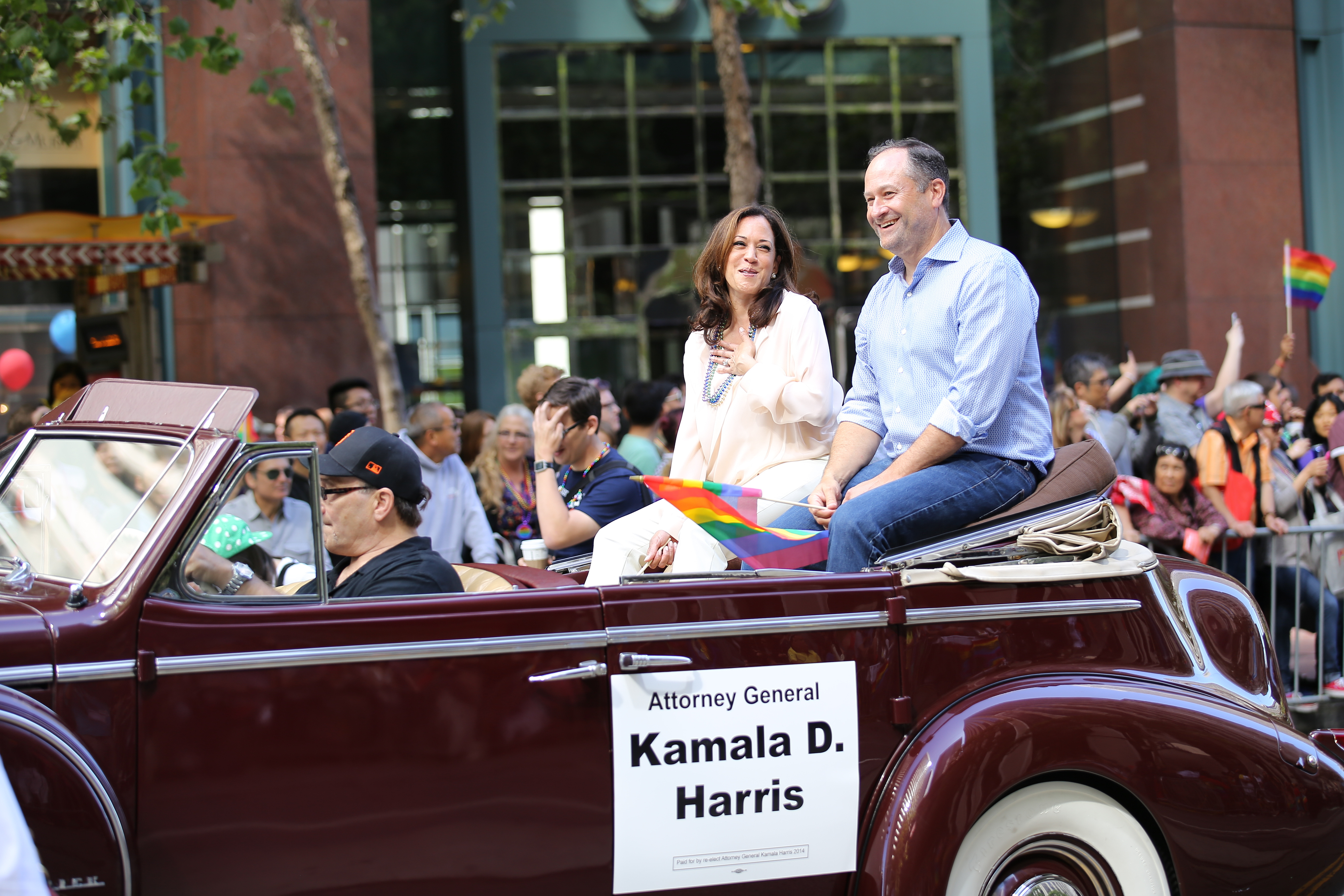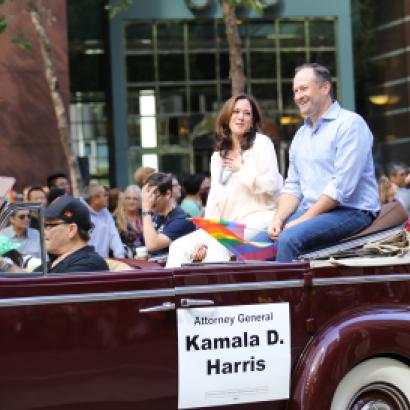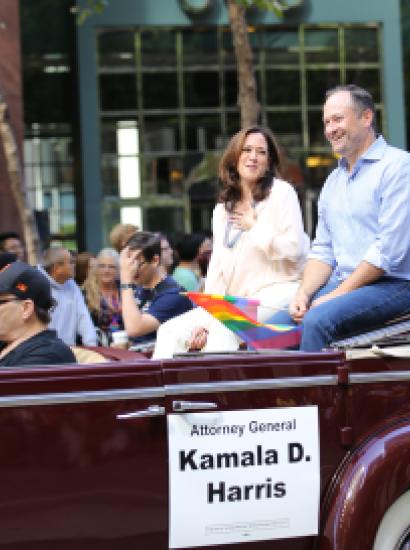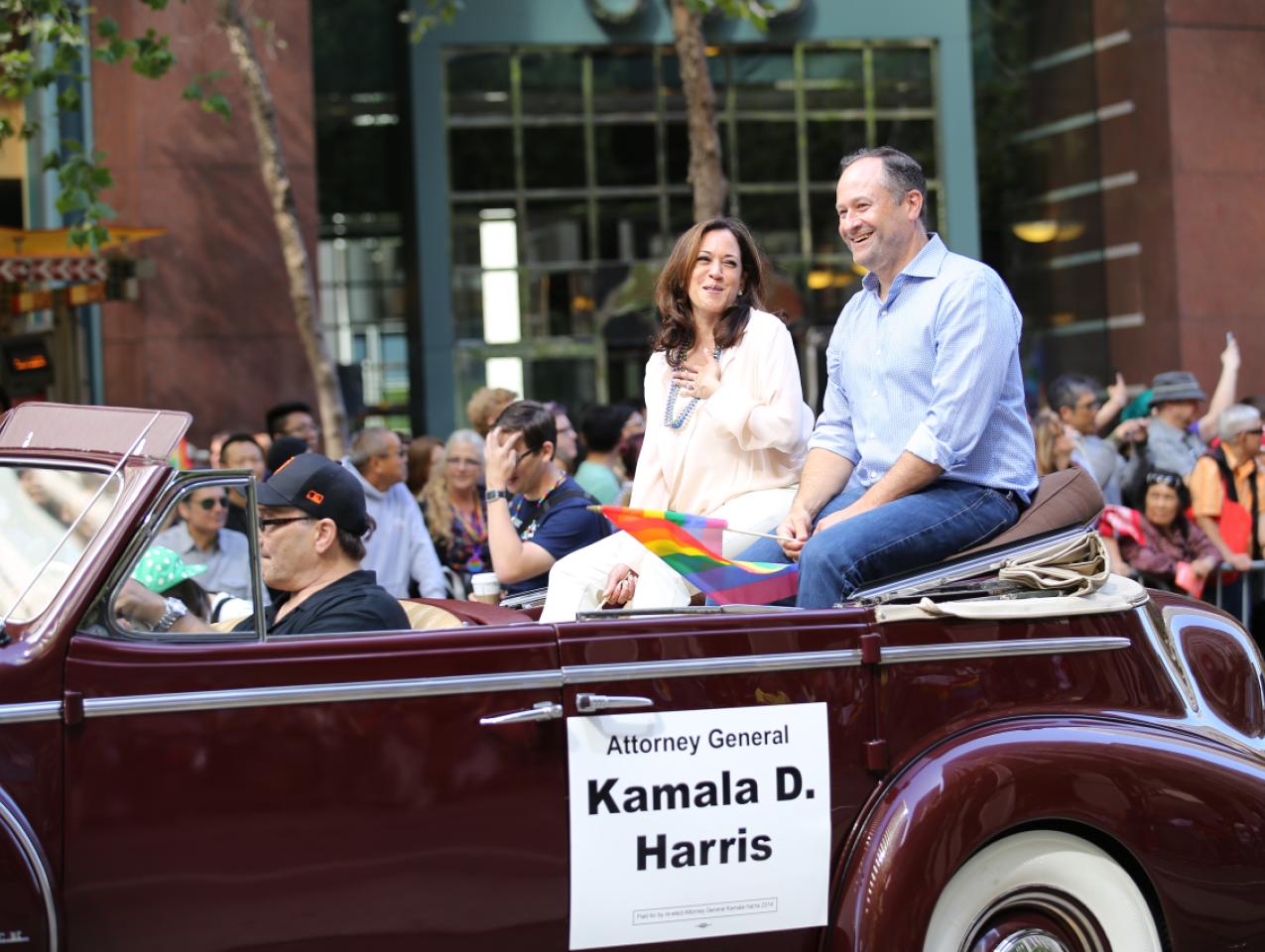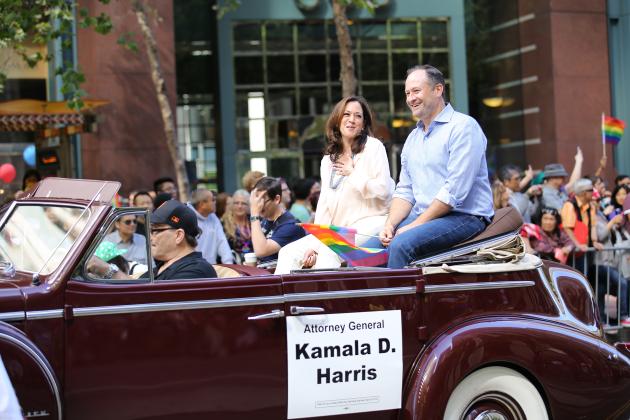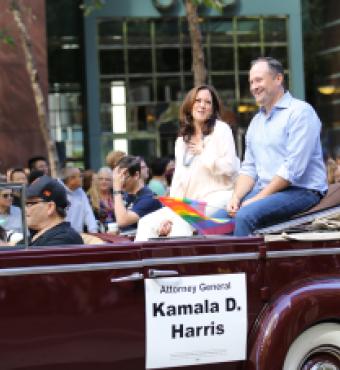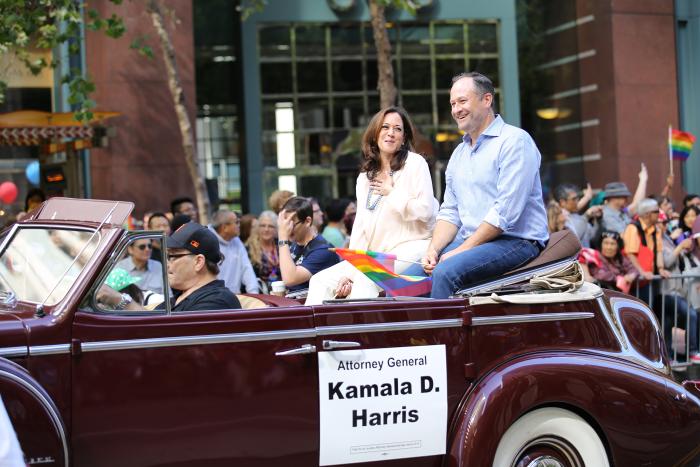- Politics, Institutions, and Public Opinion
- Campaigns & Elections
- State & Local
- California
There are now five Democratic presidential candidates who appear to have separated from the original field of 25: Joe Biden, Bernie Sanders, Elizabeth Warren, Pete Buttigieg, and Kamala Harris, who has made a significant move in the polls since her performance in the first Democratic debate.
Last week, Harris moved slightly ahead of Biden, 23 percent to 21 percent, in one highly respected poll. This same poll found Harris ahead of Trump, 49 percent to 41 percent, if the election were to be held now.
Harris, a first-term senator from California, has some advantages over several of the other leading candidates. She is much younger than Biden, who struggled with several questions during the first debate, and also Sanders, who is not generating the same enthusiasm as he did in 2016. She has more experience than Buttigieg, who is the mayor of South Bend, Indiana, a city of about 102,000 and which has been losing population over time. She also will appeal to voters who believe that 2020 is the time for a woman president.
While it is still extremely early in the race, Harris may ultimately prove to be the strongest Democratic opponent to face Trump, particularly in a debate.
Harris’s economic policies are very much in line with the progressive wing of the Democratic party. But many of her policy positions are based on faulty economic logic and inaccurate perceptions about the current US economy. She dismisses the importance of current robust economic growth: “You ask him [Trump], how are you measuring the greatness of this economy of yours? And they point to the jobless numbers and the unemployment numbers. Well, yeah, people in America are working. They’re working two and three jobs.”
But Harris’s claim is wrong. Only about five percent of employees work more than one job, and this number has been nearly constant for the last decade. Unemployment is low not because people are working multiple jobs but because private-sector incentives to hire workers are much stronger than they have been in many years, and workers are benefitting because of this.
Harris also dismisses the strength of the economy by arguing that higher-equity values only benefit the wealthy. But more than half of Americans indirectly hold stocks through various retirement plans. Moreover, higher stock values promote business expansion and economic growth. Real GDP growth averaged 2.1 percent under Obama but is averaging around 2.9 percent under Trump.
With the lowest unemployment rate in about 50 years, and the strongest real GDP and productivity growth in about 20 years, there is no doubt that this is one of the best economies we have had in a long time.
But Harris’s misperceptions about the state of our economy lead her to support several labor policies that would depress worker choice, economic opportunity, and economic growth. These policies include a $15-per-hour minimum wage and a rolling back of more than seventy years of significant union-labor legislation.
The higher minimum wage will tend to price the most vulnerable workers out of the labor market, particularly young people and immigrants who have yet to fully develop their skills. And given the pay disparities across the country, there is no sense in which a “one-size fits all” minimum wage is sensible. For example, the most recent data show that the median wage in Mississippi is $14.70 per hour. Just imagine what would happen to the Mississippi labor market if all workers had to earn at least $15 per hour.
The rollback in labor law includes eliminating “right to work” laws, which protect workers from being forced to join a union. The elimination of these laws would thus bring back the old “union shop,” which requires union membership in order to be employed. Harris also supports permitting secondary boycotts, which have been illegal since the Taft-Hartley Act of 1947. A secondary boycott occurs when a striking union coerces a third-party organization to boycott the employer of the striking workers. The ban on secondary boycotts is common-sense law that contains a strike, involving just the two immediate parties, rather than having it spread out to other participants and other parts of the economy.
These union-law changes, along with a $15-per-hour minimum wage, could be devastating for some US workers. Private-sector unionization has declined from about 35 percent in the 1950s to only about 6 percent today. An important reason for the decline is that the old-school union model of chronic labor conflict and strikes makes US industry uncompetitive, which in turn destroys jobs. Another reason for lower unionization today is that today’s workers value flexibility and the opportunity to negotiate for themselves, neither of which are present within a union collective-bargaining contract.
Harris also has proposed a subsidy to those who spend more than 30 percent of their income on rent and utilities. Families with incomes under $125,000 would be eligible for this credit and would receive monthly checks from the government. While intended to make housing more affordable, this proposal would incentivize renters to increase their housing consumption and landlords to raise rents. The policies that are needed to address the lack of affordable housing are those that increase housing supply, not those that artificially drive up housing demand.
Harris also opposes the Trans-Pacific Partnership, which would have expanded international trade. She further indicates that she would have voted against NAFTA, because it didn’t do a good enough job protecting American workers. Yet, despite her views, the unemployment rate is at a 50-year low, and worker compensation, which includes not only wage and salary payments but also the value of fringe benefits such as health insurance, is near an all-time high.
In an increasingly competitive and global economy, the most successful economic policies respect the process of the marketplace and facilitate the accumulation of human and physical capital. Harris’s policies fall short on these dimensions.







